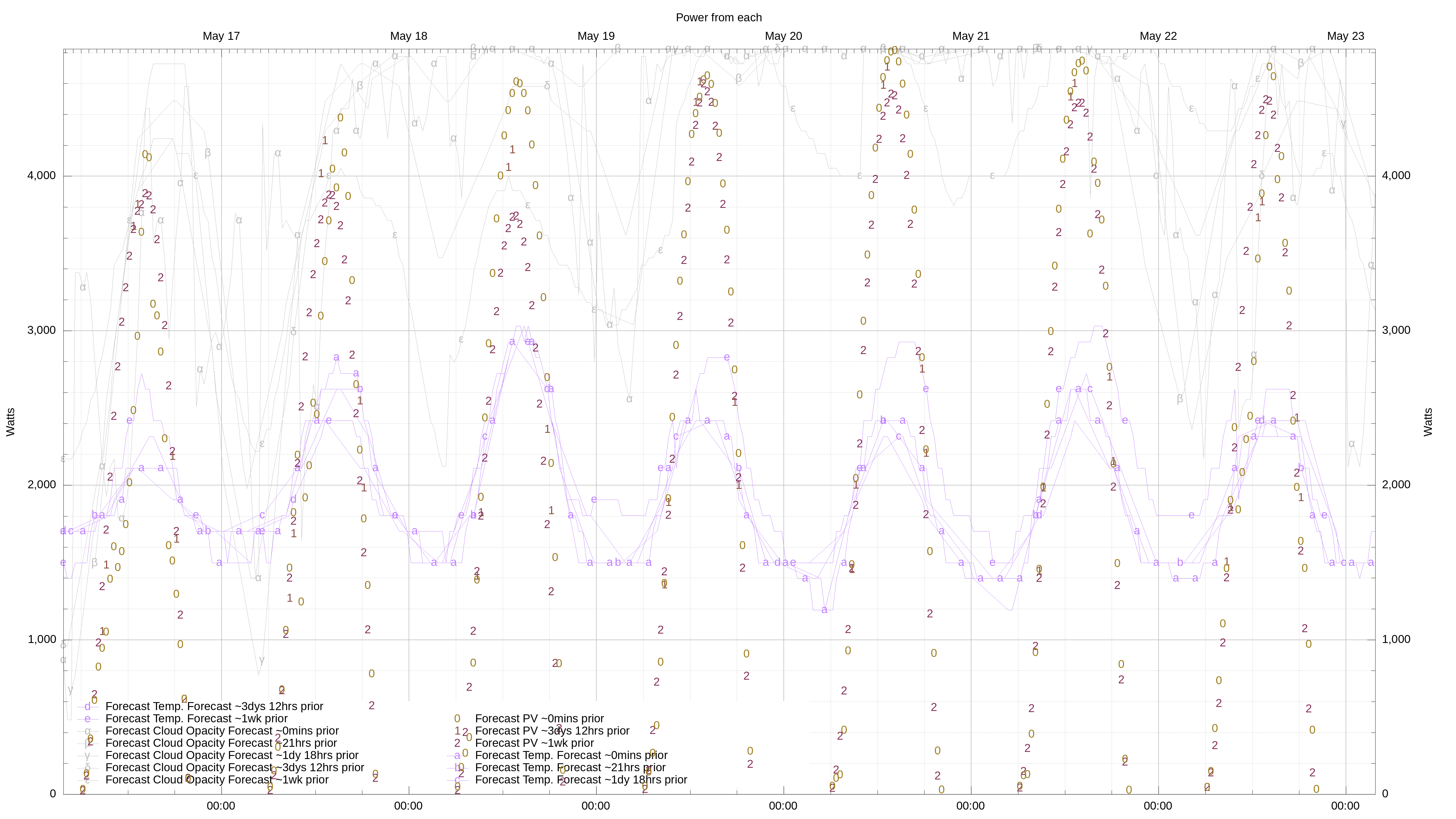Also, I haven't looked in awhile, so I need to go through the big posts that happened recently, but one thing I've thought a bit about is what happens in an extended outage when you exhaust your battery. You get a double-whammy at that point:
- Your solar panels need to see AC voltage before they'll generate, but if your battery is out, then you can't get AC voltage out of it.
- If the system is jump-started somehow (e.g. something tells the batteries that solar generation is feasible and they dump some reserve battery capacity in order to get the panels going again, or you plug in a generator, or something), then your panels need to generate enough to run whatever'll turn on in your house at that moment. Otherwise, you get a brown-out and you're back to the same problem.
For me, the solar panels and Powerwalls are on a separate breaker panel that feeds into the backup gateway separately from the main breaker panel. I don't know anything about the details of the system architecture, but I could dream up something silly like the backup gateway isolating the main breaker panel from the panels and batteries and leaving just the panels powered until the sun rose and they produced enough power to charge the batteries above a certain reserve point. That might be the most sensible way to go. Unfortunately, to test this theory, I'd need to produce my own extended outage and I'm pretty sure I don't want to.

If you physically catch it in time to save a reserve after backup use has almost depleted the batteries (i.e., a four dimensional two line intersection at one point, a rough thing to do, basically meaning you have to be monitoring it during a power failure and be home), you can physically turn off all or some subset of the PowerWalls, either at their on/off switch on the batteries, or the breaker where they feed into the breaker panel. I presume this would be enough to save that energy until a time that you can turn them back on (presumably during enough solar input), thus re-starting up your backed up microgrid, enough to get the solar system to think that it's safe to start charging. At that point, the batteries will start to charge from the solar power, and you can replete them.
The trick would be to always physically turn them off before it's time for them to be depleted again. That means black out for your home, every time.
I have not tested this. Basically, it could be tested easily:
0. This is a nice time to turn off everything in your house. (This is a blackout test. Also, you could probably do brownout tests, too, as you mentioned. Shutting down power to something while it has a load on it tends to damage switches with contactor metal melted splatter from the in-use spark across the gap during disconnection or connection when the metals of the two sides of the circuit are close enough for electricity to continue passing, especially on components that have not been made to handle this situation on a regular basis. For this reason, I would not do any brown-out tests myself.)
1. Turn utility grid connection off.
2. Turn solar input off.
3. Turn batteries off.
4. Confirm no power.
Now, the test is if the batteries can restart the solar. So:
5. Turn on batteries.
6. Confirm power if you like. You might need to turn on some devices to give the PowerWalls something to do and generate real action.
Indeed, after this test (steps 0-10), it might even be interesting to try this all over again with zero load at all to see if the solar can detect power without any load at all on the batteries, and then to see if they start to charge the batteries; that's an edge condition that could have different results than a loaded system.
7. Turn solar input on.
8. Confirm that the solar will now start to input into your system. This can be done by proxy by skipping to step 9.
9. Confirm that the solar charges the batteries.
You could have a complication that your Internet takes half an hour to an hour to restart, because you just turned everything off; in that case, one way to hurry up the process is to know the LAN IP address of your PowerWall gateway switch (not to be confused with ethernet switch or Internet/wifi/LAN gateway!*) after you turn on your LAN DHCP server (e.g., probably your little Internet closet full of stuff -- but usually you would need to know which one is the DHCP server so you can query it for the device list, or you can just try http://a.b.c.d/api/meters/aggregates for each IP# in your LAN range (check your computer's LAN IP# to get a guess)) (the PowerWall switch might have a new LAN IP# from DHCP after restart), and go to its address to get its current status, like http://192.0.0.5/api/meters/aggregates and see what it gives back to you. You're looking for battery: instant_power: <number_in_watts>; if it's negative, then it's charging, and if it's positive, it is discharging.
Then you know it works with no utility connection.
10. Turn on utility connection.
Family is here, so I cannot do step 0.
* Yes, the Tesla PowerWall Gateway is a switch, and it is called the Gateway or the switch or the controller. (It's a switch and power gateway between the various power components.) Very easy to get confused when discussing data networks too at the same time, since both power networks and data networks have gateways and switches, naturally; both are their own types of networks and the Tesla gateway is on both kinds.





